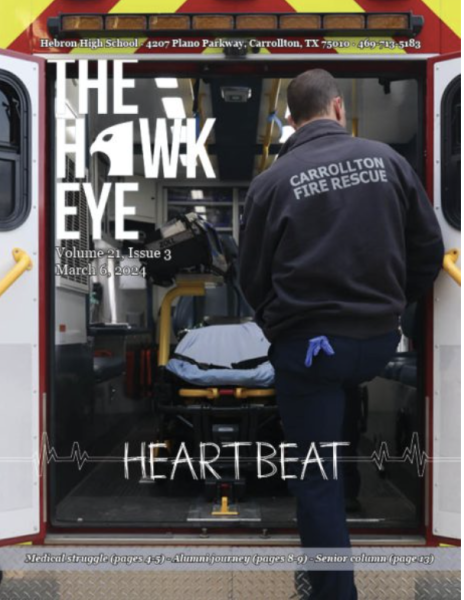Alphabet Soup: Sophomore adapts to learning disorder (Part One)
Part One
April 9, 2014
According to Brittney Baker, hobbies such as cheer and sign language help in times of frustration with her learning disorder. For the full sign language video dictionary, visit the signing savvy website.
Ten minutes left. Hands are flying around the room trying to finish, but one pencil moves a little more carefully, a little more deliberately, trying to ensure that the letter J faces the right way.
For most, writing the alphabet is a simple task. Sophomore Brittney Baker is an exception. For her, something as common as the letter J is a daily challenge and a guessing game due to dyslexia.
“I’ll write something backwards and I won’t realize it,” Brittney said. “I’ll just keep going on, so when I’m writing a story, and say I name somebody John in the story, I don’t know which way my J goes, so it’s a guess every time. There’s nothing but practice that you can do for that.”
Flipped letters and numbers are common symptoms of dyslexia. Commonly heard of, yet not fully understood, dyslexia causes many students to fall behind in school because of difficulties in reading and writing. MTA, or Multisensory Teaching Approach, is a program that is run by the district that was designed specifically to help students like Brittney.
Instead of remembering a year of Brittney drinking milk and drawing pictures in kindergarten, Brittney’s mother Lea Baker remembers sitting at the kitchen table with a young Brittney, re-teaching her how to spell simple words like cat over and over again.
“Sometimes she could spell it and everything was just fine and 30 minutes later we would sit down and it was like starting from scratch again,” Lea said. “Sometimes it was very confusing and we never knew why or what was wrong.”
For several nights, Lea stared at the bright computer screen searching for ways to test first-grade Brittney without the aid of doctors, but took her to be tested officially in the end.
“They tested her for everything, but only dyslexia came back,” Lea said. “They told us she would have trouble with phonics and the sounds of letters. My first feeling was [being] scared for her, but then I read a lot of stuff and started learning everything I could about dyslexia and how we could help her.”
After finding a source for her trouble with words, Brittney went to the MTA school until fifth grade to find ways to cope with her newly discovered disorder. Despite a rocky adjustment to new classroom expectations and a new school system, Lea saw the improvement in Brittney due to the helpful tips given to her by MTA that the previous private school never offered.
“Transitioning from private to public … was really a good thing,” Lea said. “The program was so perfect for what Brittney needed and the private school didn’t have anything for dyslexia.”
Teachers put in long hours at MTA to ensure that the students who walked into “normal” school were equipped to deal with the challenges of a non-dyslexic English class. Tips like marking whether a word is a vowel or consonant helped significantly in reading for Brittney.
“I used different methods,” Brittney said. “When I would write out the word, I wouldn’t see it as, for instance, cat. I would put, if it was a vowel, a V over the A and all these different markings, and by the markings I could tell what it was suppose to sound like.”
The phone rings as MTA teacher Mike Zaleskai’s name appears on caller ID. According to Lea, successful tips given to Brittney, as well as specific information about dyslexia given to Lea, made Zaleskai worth keeping in contact with after Brittney left MTA. For the family, she stood out among the rest of the teachers Brittney encountered.
“She was the biggest influence on Brittney,” Lea said. “ [Brittney] does things differently when she reads and this teacher taught her how to do it.”
Despite the combined efforts of both Brittney and her teachers, the transition from two hours a day in a classroom with four people in MTA to learning a different way of English became a struggle marked by frequent visits to her parents for help. The additional discomfort of unfamiliar pre-ap classes and reading a whole novel only added to the copious amount of work for Brittney.
“[English] was difficult,” Brittney said. “I hadn’t done that much reading … [in] school … so when I did, I would have my parents help me a lot because it was really hard for me to grasp the small concepts because I’m a very big picture kind of person.”
In addition to the constant need for help to get through English, Brittney said her teachers’ lack of knowledge and misconception about dyslexia only added to the amount of work.
“The teachers don’t really understand and sometimes they don’t really want to understand,” Brittney said. “They just think ‘You’re making this up’ or … ‘You’re just saying this so you get special treatment’ … but you get use to it and you have to assert that you do have special rights and that your rights cannot be taken away.”
Freshman English I teacher Courtney Kennedy sat, when needed, with Brittney at her desk in the small, off-white room, upstairs in the freshman center. According to Brittney, she, unlike some skeptical teachers, accepted and understood Brittney’s disorder. Because of this, Brittney speaks fondly of her lenient and care-free attitude and extra time spent helping Brittney with her weaker points in English.
“She … was [flexible] with my not spelling correctly,” Brittney said. “She was open about giving me more time on my tests and worked extra with me on things I didn’t understand like poetry, because that didn’t come very easy to me.”
For Brittney, a pounding heart corresponds directly with public speaking and reading.
“I’m doing Speech online because I won’t speak in front of people,” Brittney said. “Especially when I was little I would refuse to read passages. [When necessary], I’ll sit there and read my paragraph over and over again until it gets to my turn and I’ll read my paragraph and that’s all. I won’t remember anything about the story because I’ll have just read my paragraph.”






